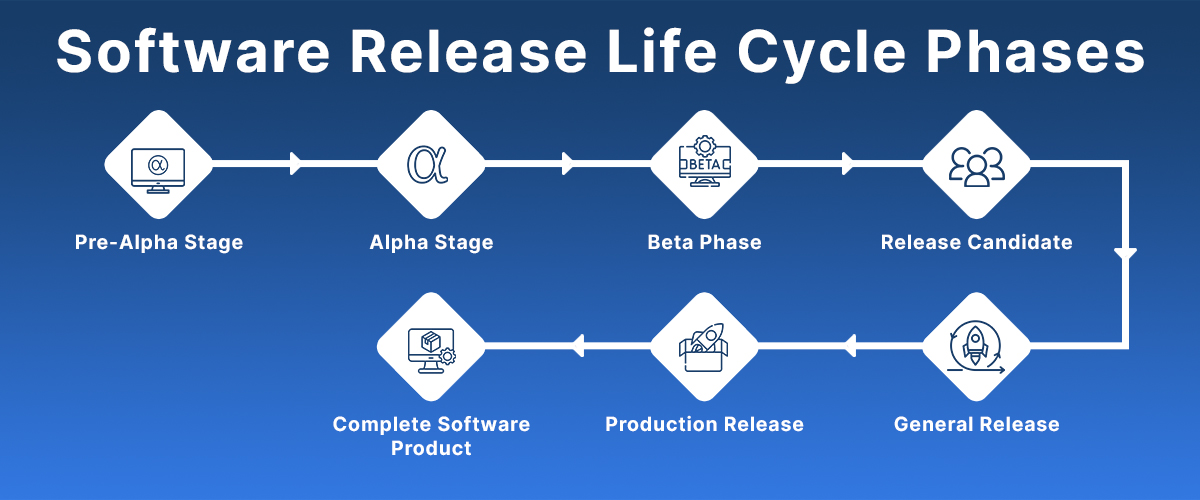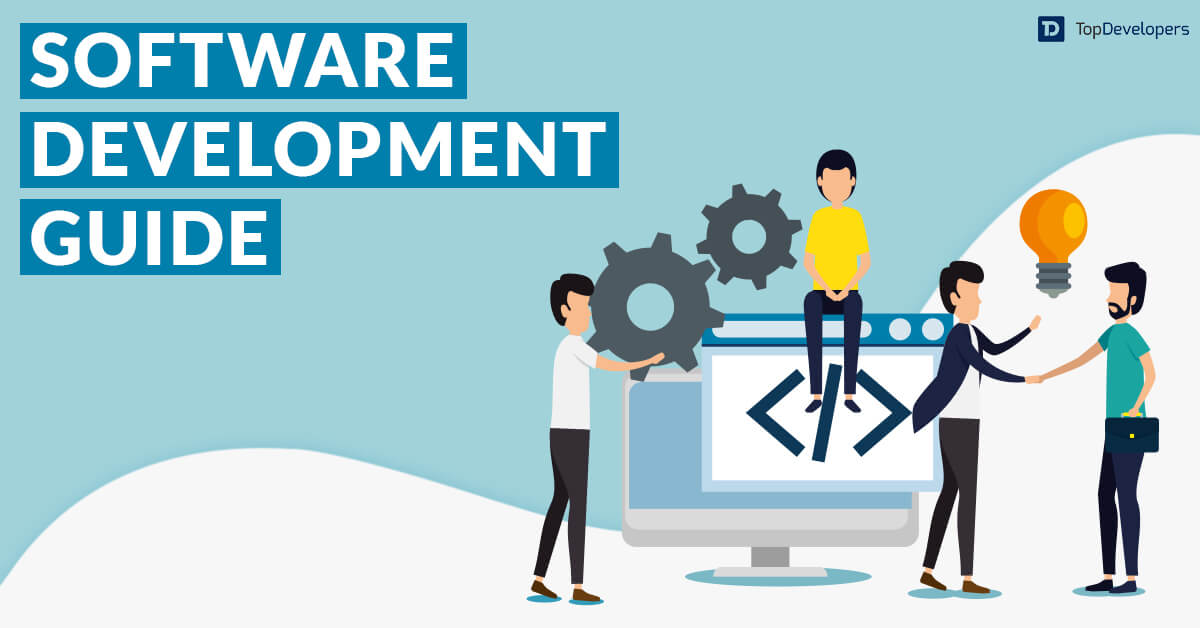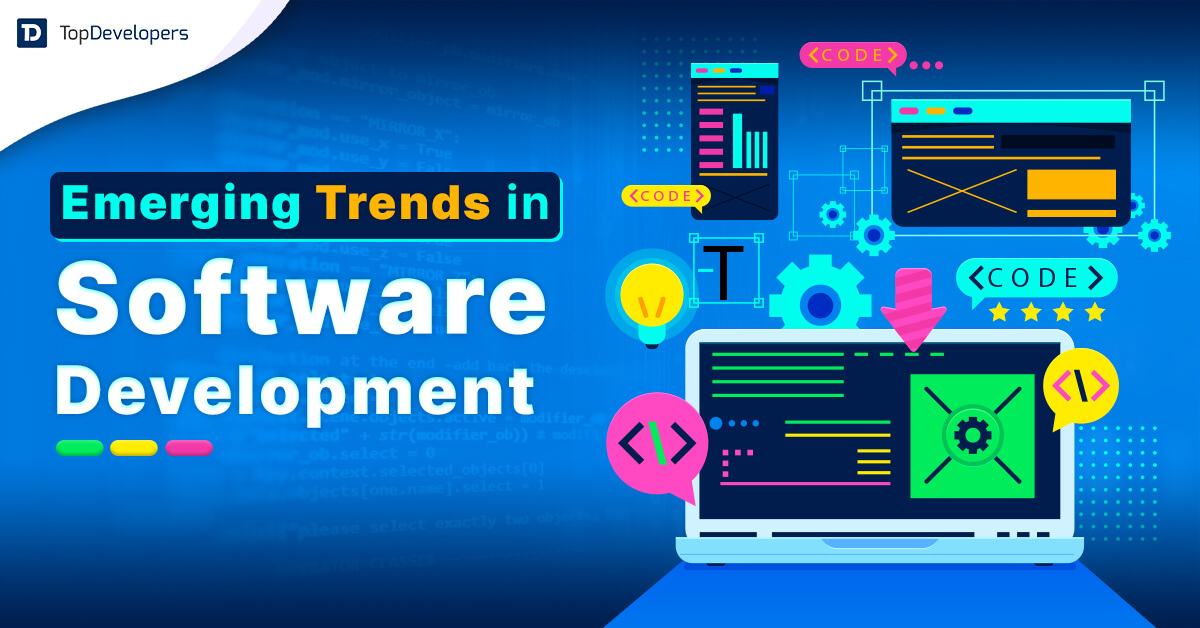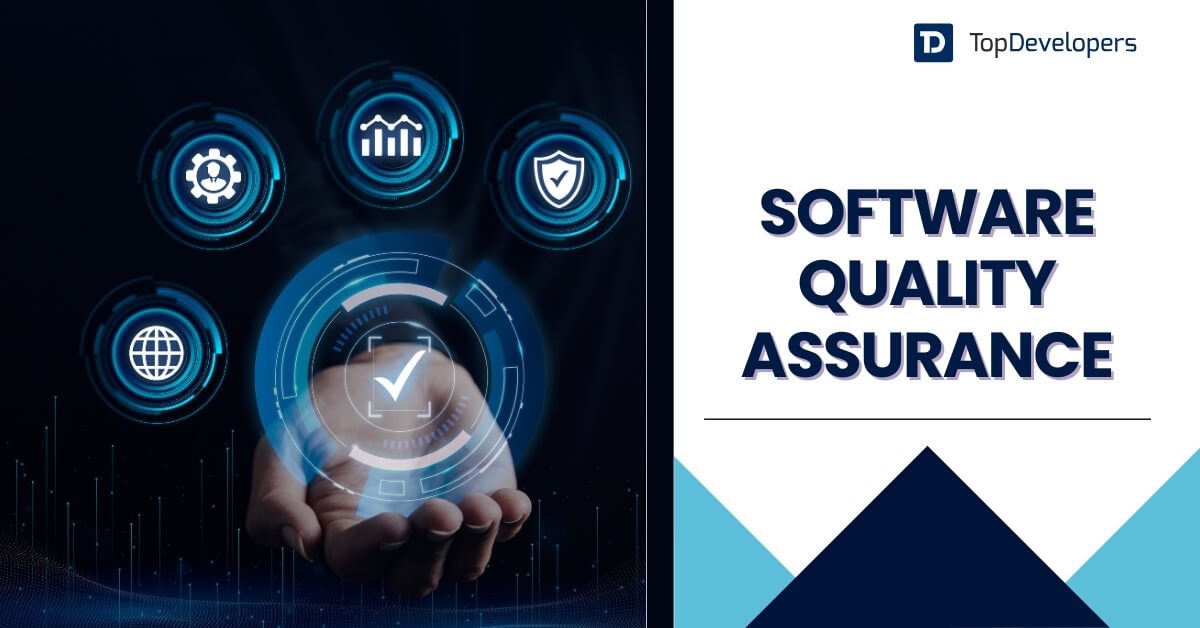
The Software Release Life Cycle (SRLC) also called the software release cycle or software development release cycle is a crucial aspect of software development that outlines all the phases and steps through which the product will pass from development to deployment. The software passes through various stages such as Pre Alpha, Alpha, Beta, Release Candidate, General Release, and Production Release to become a full-fledged product in the market with required features and functionalities. It is a structured progression that ensures that the software that is being developed is thoroughly tested, validated, and usable to targeted customers/users.
In this guide, we will go through these essential software release life cycle stages, their mechanism, and their importance. By learning these phases of software development release, you would come to know what it takes to make the best out of your product by a planned release.
Table of Contents
The Essentials of Software Release Life Cycle (SRLC)
The global spending on software is around US $1 trillion whereas the global spending on mobile apps for Q1 2024 is US $35.28 billion, according to Statista’s data on software development. This means the importance of the software release lifecycle is paramount because it offers identification and addressing of any issues in the software a bit early. The SRLC is also known to provide roadmaps for developers to ensure that every release of a bit of software meets the essential standards.
If you are thinking of building quality software solutions, you need to get the top software development companies that adhere to internationally accepted software development release standards. Following these sets of rules make sure that the final software you get has stability, security, and functionality as per your business logic and project scope. With SRLC in place, IT agencies maintain the integrity and reputation of software products in the industry.
In this short guide, we will drive you through the primary lifecycle phases or stages of software development release.
Software Release Life Cycle Phases Explained
Building software is a complex process and it undergoes various stages of the software development life cycle to ensure that the product while getting built is objective-oriented and on track to meeting the client’s expectations. After the software product is developed, the release has its own standardized approach.
Here are the steps to follow for a successful software release in the market:
The Pre-Alpha Stage
Pre-Alpha can be called a clandestine incubation period of a software release process. Here, in this stage, core functionalities and features are built. Pre-Alpha primarily focuses on planning, design, and early development. The software is generally incomplete and unstable because ample features are not yet constructed.
Developers and designers, in the Pre-Alpha phase, work closely to build prototypes and mockups to refine the software’s outcome. Testing in this stage is minimal because developers just validate primary concepts and architectural progress. In the Pre-Alpha software development release phase, feedback comes less frequently to the development team and a few stakeholders, not involving everyone. The primary goal is to build a solid foundation for the software application to ensure that major components are there before moving on to comprehensive testing.
Let us break down this phase into progressive chunks:
- Research: It is about gaining knowledge of what the software product is meant for and how it would address the market and people’s concerns.
- Planning: After research, you need to plan on how to go further about your goal. This involves necessary steps such as gathering resources and tools and also fixing up the timeline.
- Design: With research and planning in hand, now it is the time to shape your software. You need to work on how it will look and how will it attract people to use it with ease of functionalities.
- Development: The backbone of the entire lifecycle, in this phase, the soul is put into the skeleton. The software will have coding/programming to bring all features to life. This phase is all about syncing features with their functionalities.
The Alpha Stage
The next software release life cycle phase is Alpha which includes Pre-Alpha and the first step toward essential testing and features’ integration. In this stage, the software is a little bit more complete but not yet fully developed. It is likely to contain a few malfunctions and bugs that result in performance issues. The testing in the Alpha stage is generally conducted internally by the software development team and selected users. They would focus on identifying and fixing major concerns and not all. The Alpha version could lack total functionalities and some features will be just placeholders.
In the Alpha stage of the software release cycle, feedback is considered crucial because it guides developers to refine the software and improve its usability while assuring stability. The main aim of the Alpha stage in the software release process is to achieve a solution that has decent features and enters the Beta phase with minimum risks of project failure.
The Beta Phase
Beta is probably the most essential software development release phase wherein the product has completed features and is ready to undergo extensive change through testing for broader users including stakeholders and external entities. The beta phase for the software release lifecycle is conducted to identify and solve any remaining issues and flaws. This stage removes most of the bottlenecks and hence in this period, the software is more stable compared to the Alpha phase.
Beta versions are more stable but not finalized; therefore, they allow software developers to communicate with the external world and get feedback for necessary software amendments. User feedback is extremely important to fine-tune the features of the software and improve user experience (UX). Here, the software applications meet quality standards with several iterations and each of these would improve on the previous versions hence making the product ready for Release Candidate (RC) for eventual market release.
The Release Candidate
As the name suggests, the release candidate phase in the software release lifecycle process occurs after the Beta phase and showcases that the version of this software is potentially ready for market release. The RC is a feature-complete software with most of the issues, flaws, and bugs addressed carefully. The software undergoes essential testing to ensure stability, user satisfaction, and performance.
In the Release Candidate stage, only minor and extra bugs are expected to be rectified and solved. In most of the cases, there are no significant issues found and in that case, minor adjustments are performed to match the expectations. Once everything is finalized and tested, the RC is approved for general release. The main aim of this software release lifecycle stage is that the software maintains high quality and is completely functional and ready to face the production environment with the final release.
The General Release
The stage of General Release in the procedure of software release is also known as public launch or public release. In this stage, the software is made available to all customers or users. The version of GR has gone through all previous stages of development and testing to ensure that now the product is stable, dependable, and market-ready.
Here, the marketing and supporting teams get involved in this stage to spread the good word about the software product to the target audience, users, or customers. The general release means the software is now at the official debut and it is anticipated to cater to users’ needs and expectations. Constant monitoring and feedback are received to keep the software up and running.
Production Release
The production release stage for the software release process cycle marks that the software is now being deployed and used by a number of users in the live scenario. This phase includes real-world application of a product to satiate user experience through interactions. It is often supported by ongoing updates and maintenance. Primarily, in this stage, software development companies ensure smoother operations through the best possible technical support and patch releases. Feedback is paramount and it helps improve the software product further.
The production release is essential because it’s the software’s final avatar in its predefined environment. Programmers could still release some updates and bug fixes to enhance features and improve performance. Ultimately, in this stage, the software is ensured to have met operational objectives.
A Complete Software Product
The development of any customized software is a complex and iterative process that asks for foolproof planning from ideation to execution. Here, two major phases complete the cycle. Software development models guide the product through a structured development lifecycle, software release phases ensure the deliverables are up to the mark of the user demands.
The phases from Pre-Alpha to Production Release are designed to shape the software with the least or no bugs and with optimum performance. You must understand the intricacies of this process and collaborate sensibly with your tech partner. If you want to know further about how typical software shapes up, explore a comprehensive guide on software development that will help you develop software solutions with optimum functionalities.
FAQs on Software Release Life Cycle
What happens in the Pre-Alpha stage?
The Pre-Alpha phase focuses on planning, design, and early development of software. Here, software developers aim to build a powerful foundation and essential functionalities for the product with minimal testing and feedback.
What is the difference between the Alpha phase and the Beta phase in the SRLC?
In SRLC, While the Alpha phase includes internal testing of incomplete software with a remarkable number of bugs, the Beta phase has external testing of a feature-complete software version wherein remaining problems are identified and improved.
What is a Release Candidate (RC)?
A release candidate is a version of the software that is completely loaded with features and thoroughly tested for their functionalities. It ideally represents a potential final product with trivial fixes before the general release.
Why is user feedback essential in the Beta phase of the software release process?
User feedback in the Beta phase helps software developers identify and resolve any issues, malfunctioning, or bugs. It ensures that the software solution is free from any performance bottlenecks and usability issues.
What is a General Release?
In the software release life cycle, the general phase represents the stage where the final software product is made available to real users. The product is parallelly supported by technical and marketing teams. It is the official launch with assurance that the product has met the objectives.
 Avantika Shergil
| Jul 12, 2024
Avantika Shergil
| Jul 12, 2024
Avantika Shergil is a technology enthusiast and thought leader with deep expertise in software development and web technologies. With over 8 years of experience analyzing and evaluating cutting-edge digital solutions, Avantika has a knack for demystifying complex tech trends. Her insights into modern programming frameworks, system architecture, and web innovation have empowered businesses to make informed decisions in the ever-evolving tech landscape. Avantika is passionate about bridging the gap between technology and business strategy, helping businesses build customized software and website, and understand about different tools to leverage effectively for their ventures. Explore her work for a unique perspective on the future of digital innovation.








